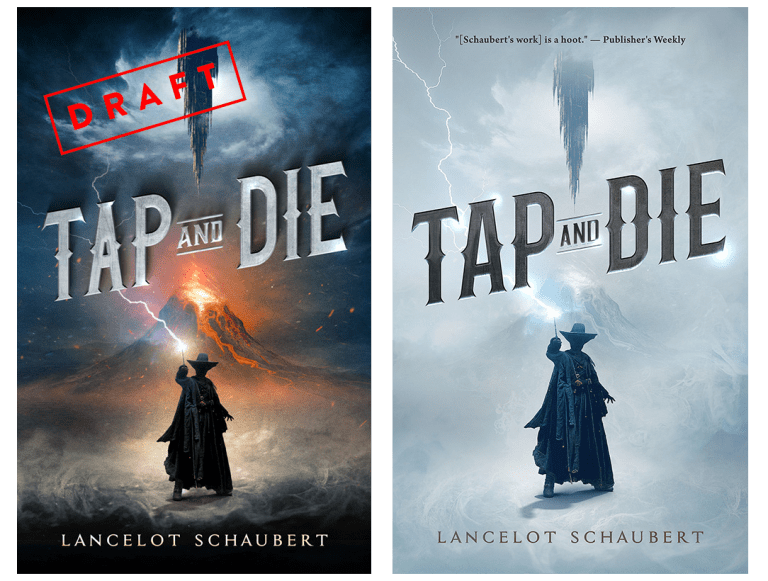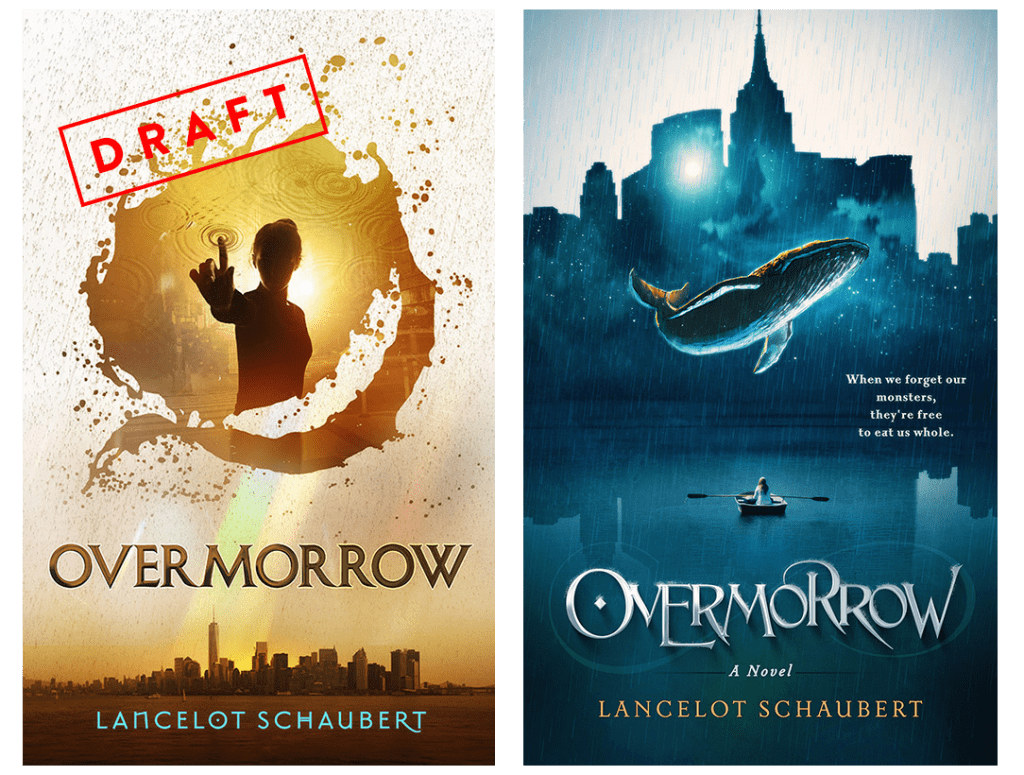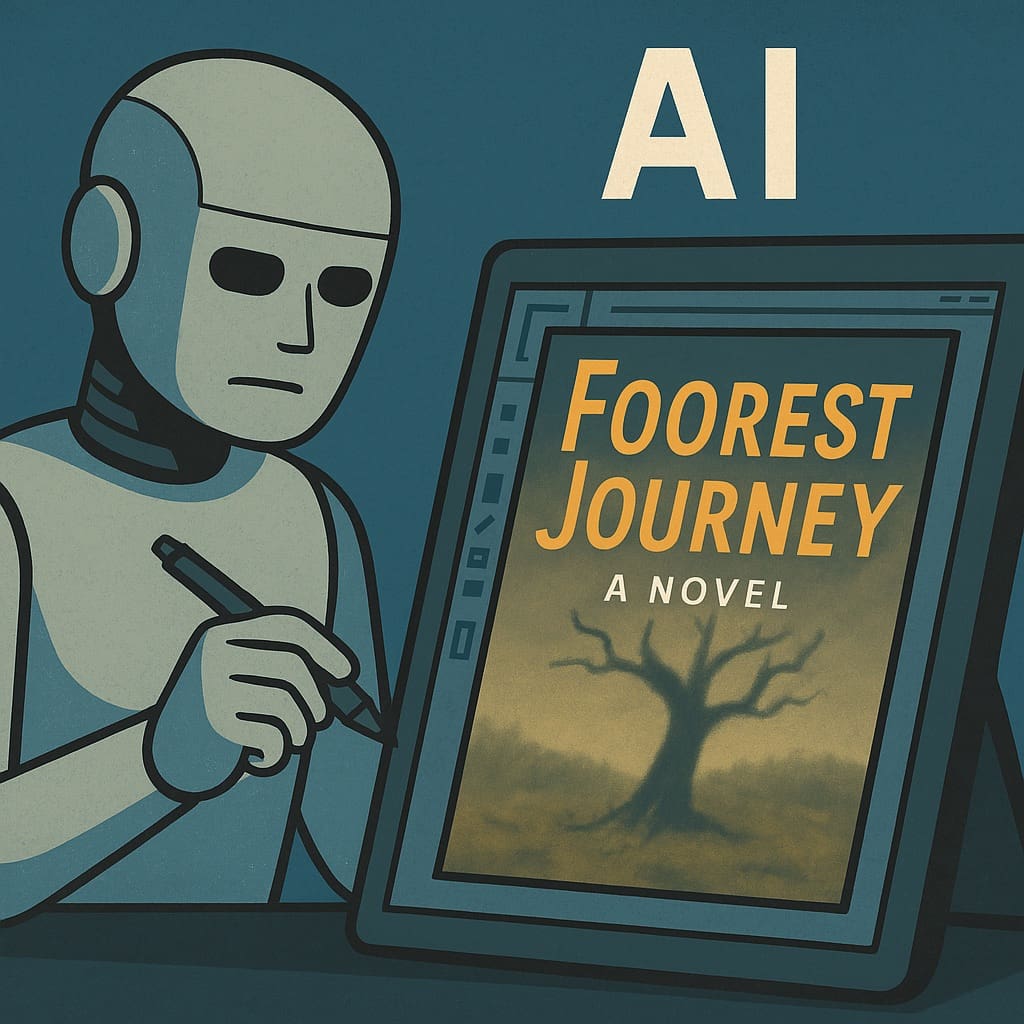Playfulness Makes the Best Book Covers
A Guest Post by Lancelot Schaubert


Between giving honor where honor’s due in the credits of my books and my covers showing up on Damonza’s portfolio and banners, authors ask me often about my experience with the team here. I always say wonderful. Easy. Joyful. Fun. Fruitful. That was the case for Bell Hammers — which Publisher’s Weekly called “a hoot” — as well as Overmorrow and Tap & Die.
I seldom say why it was fun and easy.
It’s possible on the backend that the team here hates working with me, I have no idea, I haven’t asked. (Team: it’s totally okay if any of you hate working with me, I’m completely comfortable liking people who hate me or find me annoying). I have always honestly really enjoyed working with the team here — including even through my mistakes and theirs! They’ve been easy to work with and clear with their boundaries. They’ve also been incredibly responsive.
I have found a handful of things in our collaborations have led to winning covers. (I’ll leave it up to them whether or not they show either the final covers or the alternatives or both).
Here’s where my spirit of play, fun, and collaboration come in handy:
-
I know what I like, but know that I know nothing. Nor think that I know something. What this means for me is I’m not precious about the final idea, nor do I think that I have the best idea, nor do I aspire to arrogantly assert my precious ideas out of ignorance. I have a couple of cover designers I adore generally and certain names I respect for certain projects. However, I’m not married to my ideas, my tastes. This means that, for instance, though I link to Gabrielle Wilson’s covers every time I offer suggestions, I’m by no means married to in-world ephemera. That worked well for the oil can, but not so well for Overmorrow.
-
I take the team here literally when they give me a long, detailed form asking for more information about the book. I take my time with the survey for each book. I give as many hooks as possible detailing characters, moods, motifs, symbol systems, plots, etc. I’m talking long paragraphs. I show all kinds of cover mockups, I think through a million ways it could go. It’s improv: I “yes, and” the shared reality I’m building with Damonza through the ideation process until I’m absolutely, positively spent. Then — at the end of it all — I always say that the most important thing is that the designer (1) has fun and (2) is proud of what they made. I mean that absolutely sincerely. I hope they enjoy what they made and that they’re more proud of it than any cover they make that year. Why? Because if it becomes a passion project, more than simply one more cover for a lazy or angry customer, we’ll see their best work. Folks who care and have fun work harder than folks who don’t. Consider the three year old toddler who is frigging sweating over the block tower they’re building. Is it work? Is it play? Yes.
-
I always give a full, detailed idea of one cover. We might not design that one, we might not like it, but if nothing else, it gives us a foil against which to build other covers. It starts a kind of visual debate with the other two. My ideas are most often the worst one! But I think it’s important for me to come to the table with one. I’m not only open to surprise. I want to be surprised. If nothing else, I have a detailed idea so that I have something to throw away once I’m surprised with something far, far superior from the team here. So I’m not precious with my style or my idea.
-
Once we have covers, I ask as many of my friends as possible to give me objective feedback — based on the blurb and genre — for the best cover. This is often not the one I would pick. It’s often not even one I would have guessed.
-
I then ask Damonza directly which one they’re proudest of, which one they enjoy the most. I think every time, this agreed with the pseudo crowd sourcing. That too surprised me.
-
I take all of that together, make a very difficult decision. I don’t know that any of these times did I land on the cover that appealed to me the most. For Bell Hammers, I personally like the inside joke of them peeing in the puddle, but that’s very in-world. For Overmorrow, I really wanted it to look like the Narnia silhouette, but that didn’t evoke the wonder and themes of the book the best. For Tap and Die, I liked the color one better. In retrospect, I think my gut was wrong on all three of them. I think I’ve ended up with the best cover of the set every time. And that spirit of play and joy led to the best: I really want what’s best for the story. So as my mentor said, let the text win. Let your reference texts win, then once you write the best book possible, let the story tell you what it needs. That includes the cover.
-
Then we riff again on the concept. I don’t assume we have the best cover yet, we’ve chosen a specific ebook cover mockup, but what other ideas can we come up with? I riff and riff and see if there are options. Probably not, but I still want to tease out any possible avenues we may have ignored.
- After all of that, I ask for their final decision: which one are they proudest of? I try to choose that one every time.

I know that they’re proud of it because Overmorrow made their top 10 for the year. And I really do think they should be proud. It swept the charts on NetGalley. Enough that I actually think it oversold the book, if that’s a thing: I had folks who commented over and over that they liked the cover more than the book.
So their incredible cover literally made me pull the book from production, hire a third pro editor, revise again, and rerelease the ARC on NetGalley, pushing the publication date. I literally judged my own book by its cover, found it lacking, and fixed what was wrong with it.
Making book covers playfully in this way not only gave me a better cover. It gave me a better book and made me a better writer.
In the end, my job is to write the books and though I was the designer for my cover The Greenwood Poet, Cold Brewed, Least of These Least, and the Vale Short Stories as well as co-designer for Of Gods and Globes III, I don’t know everything. And Damonza hasn’t led me wrong yet: they do this all day long and have a great idea of what works, what doesn’t, and what will mess with the minds of readers in a good way.
I trust them. I try to play and riff with them. And I’m more than happy to recommend them to anyone who asks me. If you don’t have a great experience with them, I’d recommend a much more playful, open handed approach.
You might be surprised at what wonders they dream up for you. My readers are.
Lancelot Schaubert is the author of Bell Hammers, which Publisher’s Weekly called “a hoot” (Goodreads link here for those who can take two seconds to mark it want-to-read). He wrote songs for his album All Who Wander, H.A.L.T.S., and The Spell of the Yukon; he has filmed short documentaries in Alaska and written scripts for WRKR and other film companies; he edited both The Showbear Family Circus and Of Gods and Globes; published the anthologies of his published poems Inconveniences, Rightly Considered and The Greenwood Poet (pandemic poetry written at the oldest necropolis in the United States); and he wrote and produced the graphic novels told in photos (photonovels) The Joplin Undercurrent and Cold Brewed — Cold Brewed is currently being serialized on his substack for the release of the 10th Anniversary print edition.
Bell Hammers is best consumed in audiobook format (Lancelot narrated it himself). You ought to subscribe to Lancelot’s substack here: http://lanceschaubert.substack.com
If you publish your own Substack, edit a journal, or host a blog, Lancelot is a free and open collaborator and will happily pen guest posts on a wide range of topics. He’s also starting to shop around for literary agents this summer for a pipeline of six fiction manuscripts: two literary/contemporary, one horror, one urban/rural fantasy, and one cyberpunk sci-fi.




